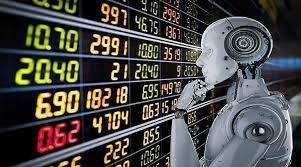In the dynamic world of finance, where time is money and every second counts, traders are constantly seeking innovative tools to gain an edge in the competitive forex (foreign exchange) market. Among these tools, forex robots have forex robot as a revolutionary solution, transforming the way traders engage with the currency markets. These automated trading systems, powered by advanced algorithms, have garnered significant attention and adoption due to their ability to execute trades with unparalleled speed, accuracy, and efficiency.
What are Forex Robots?
Forex robots, also known as expert advisors (EAs), are computer programs designed to automatically execute trades on behalf of traders in the forex market. Developed using complex mathematical algorithms and trading strategies, these robots analyze market data, identify trading opportunities, and execute trades without the need for human intervention. They operate based on predefined parameters set by traders, such as entry and exit points, risk management rules, and position sizing criteria.
The Advantages of Forex Robots
- 24/7 Trading: Unlike human traders who need rest, forex robots can operate around the clock, tirelessly monitoring the market and seizing opportunities as they arise. This continuous operation ensures that no profitable trade goes unnoticed, even during non-trading hours or when traders are unavailable.
- Emotion-Free Trading: Emotions such as fear and greed can cloud judgment and lead to irrational decision-making in trading. Forex robots eliminate emotional biases from the trading process, as they execute trades based solely on predefined rules and algorithms. This disciplined approach helps in maintaining consistency and adherence to the trading strategy, even during volatile market conditions.
- Speed and Efficiency: With lightning-fast execution speeds, forex robots can enter and exit trades within milliseconds, capitalizing on fleeting market opportunities. This speed advantage is crucial in a market where prices can change rapidly, allowing traders to take advantage of price discrepancies and exploit short-lived trends.
- Backtesting and Optimization: Before deploying a forex robot in live trading, traders can backtest its performance using historical market data. This process involves running the robot’s algorithm against past market conditions to evaluate its effectiveness and profitability. Additionally, traders can optimize the robot’s parameters to fine-tune its performance and maximize returns.
- Diversification: Forex robots enable traders to diversify their trading strategies by running multiple EAs simultaneously or using different robots with distinct trading approaches. This diversification helps spread risk across various currency pairs and trading styles, reducing the impact of potential losses from a single strategy or market condition.
Challenges and Considerations
While forex robots offer numerous benefits, it’s essential for traders to approach their usage with caution and consideration:
- Market Conditions: Forex robots operate based on predefined algorithms, which may not always be suitable for prevailing market conditions. Traders should periodically review and adjust their robots’ parameters to ensure alignment with changing market dynamics.
- Over-Optimization: Excessive optimization of forex robots based on past performance data can lead to curve-fitting, where the robot is tailored too closely to historical data and performs poorly in live trading. Traders should aim for a balance between optimization and robustness to ensure the robot’s effectiveness across varying market conditions.
- Broker Dependence: The performance of forex robots can be influenced by the quality of the broker’s trading infrastructure, including execution speed, slippage, and spreads. It’s crucial for traders to choose reputable brokers with reliable trading conditions to maximize the effectiveness of their robots.
- Monitoring and Maintenance: While forex robots operate autonomously, they still require periodic monitoring and maintenance by traders. This includes overseeing their performance, adjusting parameters as needed, and staying informed about market developments that may impact trading strategies.
The Future of Forex Trading
As technology continues to advance, the role of automation in forex trading is expected to grow even further. With the integration of artificial intelligence, machine learning, and big data analytics, future iterations of forex robots are poised to become even more sophisticated, adaptive, and profitable.
Moreover, the democratization of algorithmic trading through the availability of forex robot platforms and trading APIs (Application Programming Interfaces) has empowered traders of all levels to harness the power of automation in their trading endeavors.
In conclusion, forex robots represent a paradigm shift in the way traders approach currency trading, offering unparalleled speed, efficiency, and objectivity. While they’re not devoid of challenges, their potential to enhance trading performance and unlock new opportunities cannot be overstated. As technology continues to evolve, forex robots are poised to remain at the forefront of innovation in the ever-evolving landscape of financial markets.


